Exploring the Majestic Beauty of Sri Lanka’s Central Highlands – Horton Plains National Park
Physical Features of Horton Plains National Park
Horton Plains National Park is located on the southern plateau of Sri Lanka’s central highlands. Kirigalpoththa (2,389 meters (7,838 ft)) and Thotupola Kanda (2,357 meters (7,733 ft)), Sri Lanka’s second and third highest peaks, are located to the west and north, respectively. The elevation of the park ranges from 1,200 to 2,300 meters (3,900–7,500 feet).
The rocks found in the park are Archaean in age and belong to the Precambrian high series, consisting of Khondalites, Charnockites, and granitic gneisses. The soil type is red-yellow podsolic, with decayed organic matter covering the surface layer.

Rhododendron arboreum is the predominant tree species in Horton Plains National Park
The average annual rainfall exceeds 2,000 millimeters (79 in). The amount of sunlight available to plants is limited by frequent cloud cover.
The average annual temperature is 13 °C (55 °F), but it varies greatly throughout the day, reaching as high as 27 °C (81 °F) during the day and as low as 5 °C (41 °F) at night. During the southwest Monsoon season, the wind can reach gale force.
Although there is some rain throughout the year, the dry season lasts from January to March. In February, ground frost is common. During the wet season, the mist can last for the majority of the day.
The park contains numerous pools and waterfalls, and Horton Plains is considered Sri Lanka’s most important watershed.
The Horton Plains are the source of several major rivers, including the Mahaweli, Kelani, and Walawe. Belihul Oya, Agra Oya, Kiriketi Oya, Uma Oya, and Bogawantalawa Oya are also fed by the plains.
Fog and clouds deposit a significant amount of moisture on the land due to its high elevation. The park’s important wetland habitats include slow-moving streams, swamps, and waterfalls.
Horton Plains is located on the southern plateau of Sri Lanka’s central highlands. The elevation of the park ranges from 1,200 to 2,300 meters (3,900–7,500 feet). The average annual rainfall exceeds 2,000 millimeters (79 in).

Waterfall-in-Horton-Plains-National-Park
Flora Diversity of Horton Plains National Park
The park’s vegetation is divided into two distinct groups: 2,000 ha (7.7 square miles) of wet patna (Sinhalese: patana, montane grasslands) and 1,160 ha (4.5 square miles) of subtropical montane evergreen forests.
The park is home to nearly 750 plant species from 20 different families. Calophyllum Walkeri grows to a height of 20 m (66 ft) and forms communities with Myrtaceae species such as Syzygium Rotundifolium and S. Sclerophyllum, as well as Lauraceae members such as Litsea, Cinnamomum, and Actinodaphne Speciosa. Strobilanthes spp. dominate the undergrowth layer.
The Strobilanthes vegetation’s thickness impedes the development of a herb layer. Indocalamus and Ochlandra are two dwarf bamboo species found in the undergrowth layer. Rhodomyrtus Tomentosa bushes thrive in forest margins and near mountain peaks.
Species such as Gordonia and Rhododendron arboreum have spread from the Himalayas to Sri Lanka, along the Western Ghats of South India, and are now common. Nearly 54 woody plant species have been identified in the park, with 27 (50 percent) of them being endemic to Sri Lanka.
Plagioclimax communities of grassland flora are distinguished by frequent fire and grazing. Arundinella Villosa and Chrysopogon Zeylanicus dominate the grasslands. In low-lying areas, waterlogged swamps or slow-moving streams can be found, and macrophytes such as Aponogeton Jacobsenii, sedge species Isolopis Fluitans, and Utricularia spp. can be found near the slow-moving streams.
Along the banks of the streams, the bamboo Chimonobambusa Densifolia thrives, and grass species such as Juncus Prismatocarpus, Garnotia Mutica, Eriocaulon spp., and Exacum Trinervium are common.
In the wet hollows, tussock grasses such as Chrysopogon Zeylanicus and Cymbopogon Confertiflorus can be found. The grasslands’ herbaceous flora includes temperate species such as Ranunculus, Pedicularis, Senecio, Gentiana, and Alchemilla, as well as tropical species such as Eriocaulon and Ipsea Speciosa (a rare endemic daffodil orchid).
The park’s most common boreal herbaceous plants are Viola, Lobelia, Gaultheria, Fragaria, and Plantago.
Many species of ferns, Lycopodium, lichens, and orchids adorn the trunks and branches of trees. The beauty of the forests is enhanced by the presence of an old man’s beard (Usnea barbata) hanging from branches. Approximately 16 orchid species are endemic.
Shrubs like Rhodomyrtus Tomentosa and Gaultheria Fragrantissima, herbs like Exacum Trinervium, E. Walkeri, and Drosera Indica, and tree ferns like Cyathea spp. are also notable.
Anzia, a foliose lichen genus belonging to the Parmeliaceae family that had not previously been recorded in Sri Lanka, was discovered here in 2007.
There are differing perspectives on how the park’s grasslands came to be, whether man-made or natural. It is now thought that grasslands on dry slopes were formed by forest clearance and fires, whereas grasslands in low-lying areas were formed naturally by wet conditions, frost, and soil erosion.
Sri Lankan national park is home to nearly 750 plant species from 20 different families. Grasslands and forests are made up of 2,000 ha (7.7 square miles) of wet Patna and 4.5 square miles of subtropical montane evergreen forests. The grasslands’ herbaceous flora includes temperate species such as Ranunculus, Pedicularis, Senecio, Gentiana, and Alchemilla. The beauty of the forests is enhanced by the presence of an old man’s beard (Usnea barbata) hanging from branches.

Rhododendron-arboreum-is-the-predominant-tree-species-in-Horton-Plains-National-Park
Fauna Diversity of Horton Plains National Park
Horton Plains National Park region’s vertebrate fauna includes 24 mammal species, 87 bird species, nine reptile species, and eight amphibian species. At the latest, the Sri Lankan elephant vanished from the region in the 1940s.
The sambar deer is currently the largest and most visible mammal. According to some research findings, the sambar deer population is estimated to be between 1500 and 2000 individuals, possibly exceeding the carrying capacity of the plains.
Kelaart’s long-clawed shrews, toque macaques, purple-faced langurs, rusty-spotted cats, Sri Lankan leopards, wild boars, stripe-necked mongooses, Sri Lankan spotted chevrotains, Indian muntjacs, and grizzled giant squirrels are among the other mammal species found in the park. Fishing cats and European otters visit the park’s wetlands to hunt aquatic animals.
The Horton Plains slender loris (Loris Tardigradus Nycticeboides, formerly Loris Lydekkerianus Nycticeboides) is a subspecies of the red slender loris that lives only in the highlands of Sri Lanka and is one of the world’s most endangered primates.
The mammal was photographed for the first time in July 2010 by a group of researchers from the Zoological Society of London. Rusty-spotted cats (Prionailurus rubiginosus) were discovered for the first time in Horton Plains National Park in 2016, at elevations of 2,084–2,162 m (6,837–7,093 ft).

Sambar-Deer – Commonly Seen Animal in Horton Plains
During the winter, many birds migrate here, including swiftlets and alpine swifts. Birds of prey found in Horton Plains include the crested serpent eagle, mountain hawk-eagle, black-winged kite, and peregrine falcon. Among the migratory raptors are harriers.
This is an important wildlife habitat. The dull-blue flycatcher, Sri Lanka white-eye, Sri Lanka wood pigeon, and Sri Lanka bush warbler are among the six highland endemic birds found here. Yellow-eared bulbul and black-throated munia are common in the highlands.
Sri Lanka is regarded as the world’s herpetological paradise.
The park is home to at least 15 amphibian species. Microhyla zeylanica, Uperodon palmatus, Zakerana greenii, Hydrophylax gracilis, Pseudophilautus alto, Pseudophilautus frankenbergi, Pseudophilautus micro tympanum, Pseudophilautus schmarda, and Taruga eques are among them.
De Silva has observed five endemic plains reptiles. Calotes Nigrilabris, Rhino-horned lizard, Cophotis Ceylanica, Lankascincus Taprobanensis, and the common rough-sided snake are the species.
The park contains two fish species: common carp and rainbow trout, both of which are introduced. Many endemic crustaceans live on Horton Plains, including Caridina Singhalensis and Perbrinckia species.
The endemic freshwater shrimp Caridina Singhalensis can only be found in streams with temperatures below 15 degrees Celsius and is now restricted to a 10-kilometer stretch of one stream.
Horton Plains National Park is one of Sri Lanka’s Important Bird Areas (IBAs). Sri Lankan leopards, wild boars, stripe-necked mongooses, Indian muntjacs, and grizzled giant squirrels are found in the park. Horton Plains is an important wildlife habitat in Sri Lanka’s highlands. During the winter, many birds migrate here, including swiftlets and alpine swifts. Endemic species include the dull-blue flycatcher, Sri Lanka white-eye, and Sri Lanka wood pigeon.
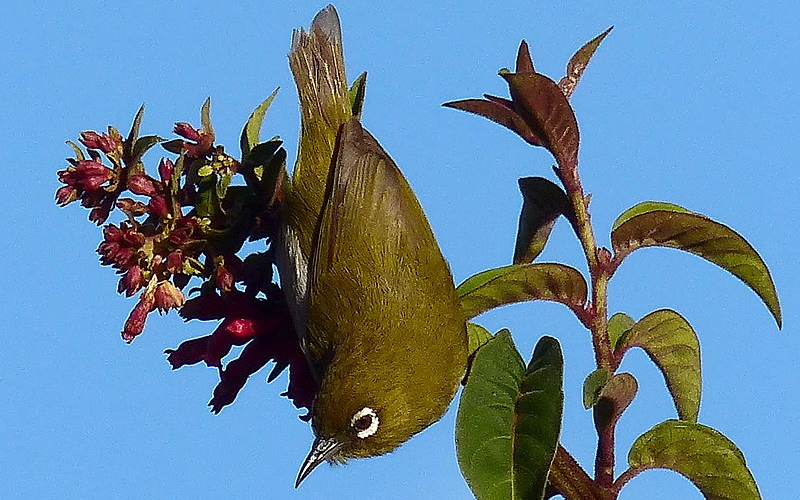
Sri-Lanka-white-eye
Threats & Conservation Management
Agra-Bopats, Moon Plains, and Elk Plains were all part of a large system of plains and forest cover that included Horton Plains. It was used as a Sambar deer hunting ground between 1831 and 1948.
To a lesser extent, elephants and wild boars were also hunted. Lower slopes were cleared during this time period, first for coffee and then for tea plantations. As a result, Horton Plains and Peak Wilderness were cut off from the rest of the forest and grassland areas.
Potatoes were grown in the grasslands until 1977 when they were phased out. These areas were reintroduced as grasslands after being designated as National Parks. Tourism-related conservation issues include plant removal, littering, fires, and noise pollution.
Other threats include gem mining, timber logging, plant collection for ornamental and medicinal purposes, encroachment, poaching, and vehicle traffic. Invasive alien species such as gorse (Ulex europaeus), Mist Flower (Ageratina Riparia), Crofton Weed (Ageratina Adenophora), Blue Stars (Aristea Ecklonii), brackens, and Pennisetum spp. are threatening the native flora.
The introduced rainbow trout may have harmed endemic fish, amphibians, and crustaceans.
Because of the Horton Plains National Park’s small size, it was predicted that most male leopards would have activity centers outside the park.
As a result, continued protection of the national park, as well as the integrated management of landscapes outside the national park, is critical for the conservation of the species found there.
Some sambar deer have died as a result of eating polythene litter, which clogged their food passages, and visitors are not permitted to bring polythene into the park.
The introduced Pennisetum grass species has benefited sambar. Forest dieback is a relatively new threat, first identified in 1978. This has been severe in some areas, particularly in the peripheral region, with vegetation loss of nearly 50%. As droughts become more common, water scarcity has been identified as the primary cause of dieback. Frost, which is becoming more severe, is preventing forest regrowth.
The forest dieback has affected 22 plant species, with Calophyllum Walkeri being the most severely affected. According to one study, low calcium causes soil acidification, and increased toxicity caused by metallic elements such as aluminum may be the cause of dieback.
Nutrient leaching and the resulting imbalance in soil micronutrients could also be contributing to dieback.
Horton Plains was used as a Sambar deer hunting ground between 1831 and 1948. Invasive alien species such as gorse are threatening native flora. Forest dieback has affected 22 plant species, with Calophyllum walkeri being the most severely affected.

Worlds-End-is-a-sheer-precipice-within-the-park-and-a-major-attraction
Hiking Trails at Horton Plains National Park
Hiking is one of the main activities on offer at Horton Plains National Park. There are a number of well-marked trails that visitors can follow, ranging from easy strolls to more challenging treks. The most popular route is the World’s End trail, which takes visitors to the park’s most famous viewpoint. This trail is around 9.5 kilometers long and takes about 3-4 hours to complete. Along the way, hikers will pass through stunning landscapes and encounter a range of wildlife.
Another popular route is the Baker’s Falls trail, which is around 3 kilometers long and takes visitors to a beautiful waterfall. This trail is relatively easy and suitable for visitors of all ages.
There are also a number of longer treks on offer for more experienced hikers. These trails take visitors through some of the park’s more remote areas and offer stunning views of the surrounding landscape.
Highlights of Horton Plains National Park
The Horton Plains National Park offers visitors a unique and unforgettable experience, with several attractions that are sure to leave a lasting impression. Here are some of the park’s highlights:
World’s End
One of the most popular attractions in the park, the World’s End cliff offers stunning panoramic views of the surrounding landscape. The cliff drops almost vertically for about 870 meters, making it one of the highest escarpments in Sri Lanka.
Baker’s Falls
Located about 3 kilometers from the entrance of the park, Baker’s Falls is a beautiful waterfall that cascades down from a height of about 20 meters. The waterfall is named after Samuel Baker, a British explorer who is said to have discovered the falls in the 19th century.
Kirigalpoththa Trail
For those who enjoy hiking, the Kirigalpoththa Trail offers a challenging and rewarding experience. The trail takes visitors to the summit of Kirigalpoththa, which is the second-highest mountain in Sri Lanka, offering breathtaking views of the surrounding landscape.
Endemic Flora and Fauna
The park is home to several endemic plant and animal species that are not found anywhere else in the world. Visitors can get a chance to see these unique species up close and learn about their conservation status.
Cloud Forests
The park is home to several cloud forests, which are a rare and unique ecosystem found in high-altitude regions.
Conclusion
Horton Plains National Park is a unique and breathtaking natural wonder that offers visitors a chance to explore the diverse landscapes, flora, and fauna of Sri Lanka’s highlands. The park’s famous attractions, including the World’s End viewpoint and Baker’s Falls, are not to be missed, but there is much more to discover within the park’s boundaries.
The park’s importance for conservation cannot be overstated, as it is home to numerous endemic and endangered species of plants and animals. The park’s management has done an impressive job of balancing conservation efforts with visitor access, and it is clear that the park is well-cared for and protected.
Visitors to Horton Plains National Park should be prepared for cool temperatures and variable weather, as well as some strenuous hiking. However, the rewards for those who make the effort are truly incredible, with stunning vistas, fascinating wildlife, and a sense of being in a truly special place.
Overall, Horton Plains National Park is a must-visit destination for nature lovers, hikers, and anyone interested in experiencing the unique beauty of Sri Lanka’s highlands.

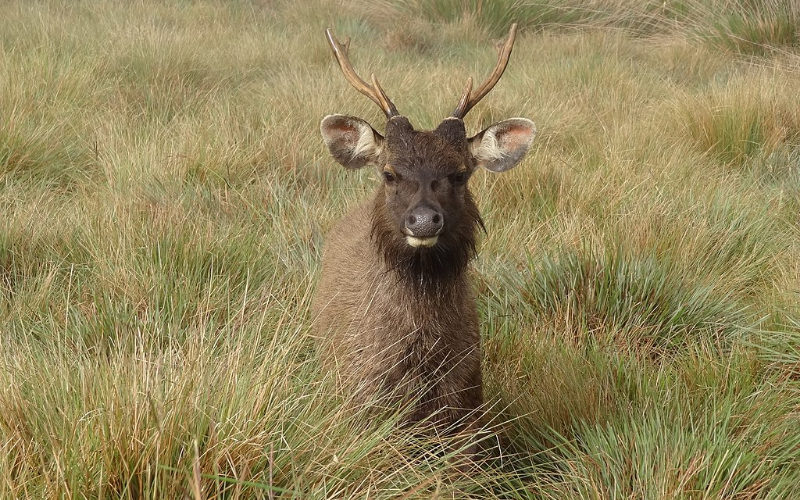




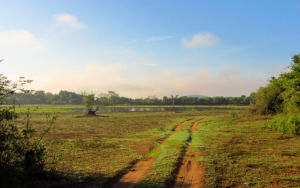
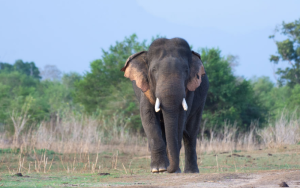

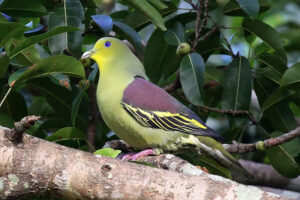


One thought on “Horton Plains National Park – Sri Lanka”
I haven¦t checked in here for some time because I thought it was getting boring, but the last several posts are great quality so I guess I¦ll add you back to my daily bloglist. You deserve it my friend 🙂